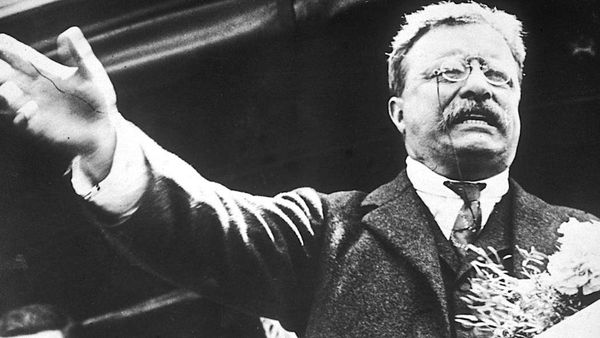Credit Governor Theodore Roosevelt with signing the first bicycle side path law into effect in 1899. It provided for the establishment of side path commissions in any NY county upon the petition of 50 residents. They could negotiate, build and contract for the maintenance of paths in their counties, funded by a license fee on users of up to $1/year. Unlicensed users were subject to a fine of $25 or even jail. The side path movement rapidly spread westward based on the NY model, largely through the strong support of the powerful League of American Wheelmen (LAW). Similar laws were passed in PA, OH and MI. Many observers expected Iowa lawmakers to approve similar legislation, but time ran out. Automobiles exploded onto the scene and the bicycle mania cooled. The roads vs. side paths-debate was settled in favor of cars and roads. Bicycles were reduced to the status of primarily a children’s toy. It would be nearly 60 years before the idea of bike trails was revived.
With the physical fitness boom that started in the early 1960s and growing environmental movement, bicycles became popular again with both young and old. Bike sales doubled almost every year and voters demanded safe paths away from automobile traffic for themselves and their children. The first modern bike trail or “bikeway” was constructed in Homestead, FL in 1962. The federal government got into the act in 1966 when the Department of the Interior granted $367,000 to 12 communities to get paths started, including Omaha, Chicago and Milwaukee here in the Midwest. That same year Wisconsin created the first bikeway to span a state, connecting 65 miles of back roads and 267 miles of an abandoned railroad line. The use of unused RR right-of-ways was swiftly adopted by other states, especially after Congress deregulated the industry in 1980 and the companies started abandoning thousands of miles of unprofitable lines every year. The Iowa Legislature showed its support for trails in Apr. 1970 with passage of the Recreational Bikeways Bill, designating $10,000 for planning bikeways over scenic and backroads here. Iowa was especially well positioned to take advantage of the “Rails to Trails” movement with its almost unparalleled network of lines crisscrossing the State, but, as in the 19th century, there was strong pushback from the Ag community.
The 19th century bicycle path movement had lasting effects. The organization and lobbying efforts of Good Roads members ultimately produced our modern roads and highways, road-laws and the funding system we have today. Many of our common sense regulations originated with the wheelmen–for example, wide tire laws mandating that every vehicle be equipped with tires of a width commensurate with its weight and carrying capacity, and laws mandating the transport by trains and buses of passengers’ bicycles.



